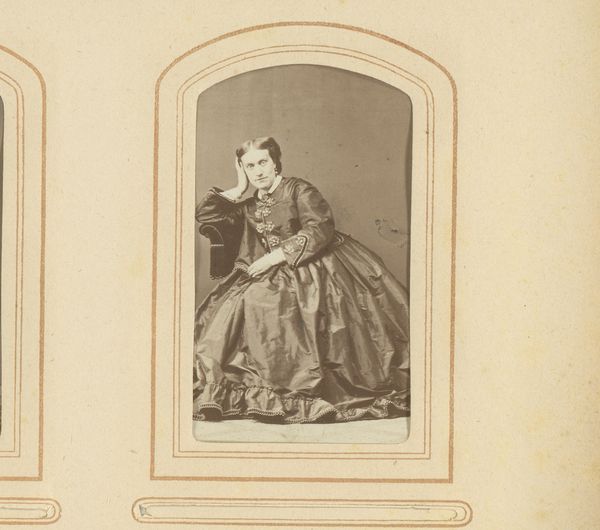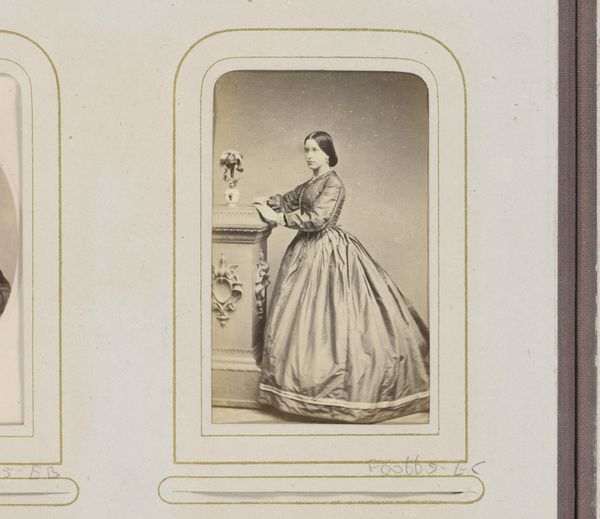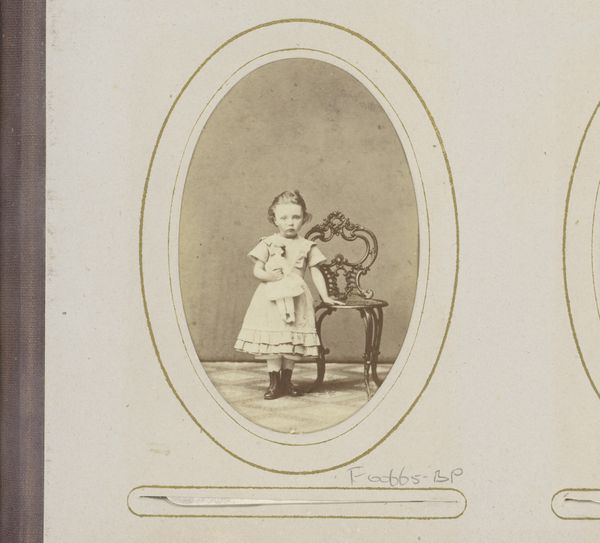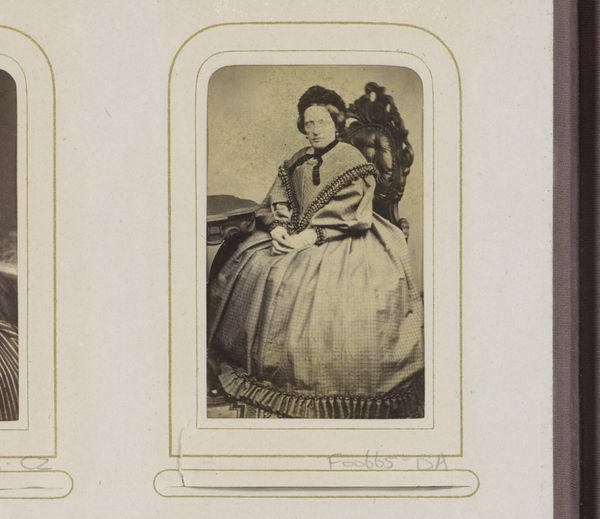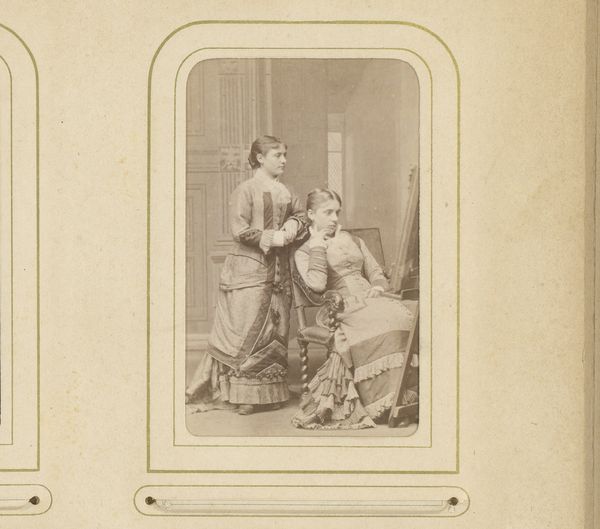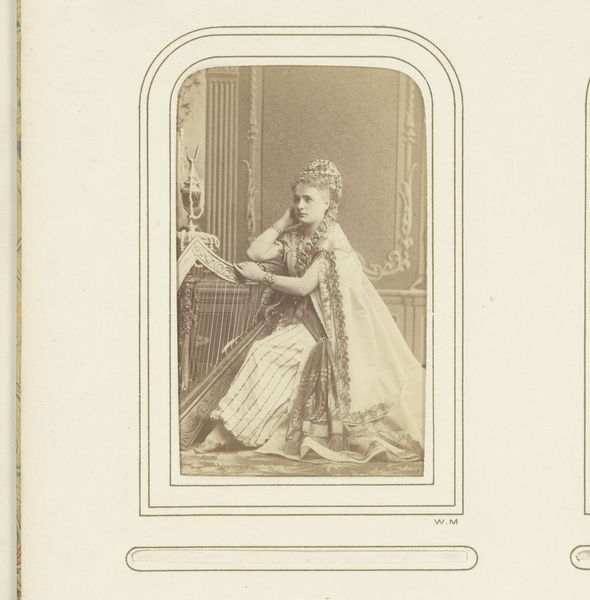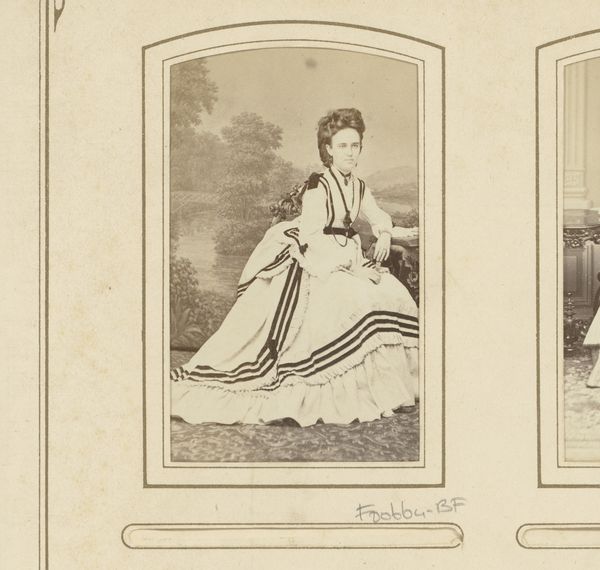
photography
#
portrait
#
mother
#
photography
#
historical photography
#
19th century
#
genre-painting
#
realism
Dimensions: height 81 mm, width 49 mm
Copyright: Rijks Museum: Open Domain
Curator: This striking piece, taken sometime between 1863 and 1900, captures a seated woman with a child in her lap. It's titled "Portret van een zittende vrouw met kind op schoot," and the work, by Johannes Baer, comes to us via photography and presently resides in the Rijksmuseum. My first impression is that of subdued dignity. The photograph’s monochrome palette and the subjects’ formal posture creates a sense of reverence and restrained emotion. Editor: Dignified, yes, but perhaps also melancholic? There's something about the woman's averted gaze and the child's rather solemn expression that speaks to the constraints placed upon women and children in the 19th century. The photograph itself, as a relatively new medium, becomes a powerful tool in shaping societal ideals and family memory, don't you think? It reminds us of how class and status dictated visual representation at this time. Curator: Absolutely. Photography in that era served as more than just documentation; it was about constructing an image, almost like a secular icon. Observe the way the light falls upon them—almost sculptural, creating distinct emotional symbolism through their forms and dress. Each crease in the mother's gown seems to tell its own story about her lived life within a rigid structure, highlighting material, pattern, and societal positioning through clothes as an artistic choice. Editor: And the act of sitting itself, consider it! Who sits, how they sit, why they sit--everything communicated intentionality to be seen. What I find particularly compelling is the potential tension in depicting motherhood. The expectation of maternal warmth versus the reality of social and economic limitations of gender and the labor inherent to motherhood. Do you get a sense that we can see the artist wrestling with those dual realities? Curator: Certainly, wrestling feels apt here, rather than fully embracing one interpretation. Look closely, and there are no embracing arms, no eye contact, no bright, obvious joy—simply posed awareness. Perhaps Baer aims to explore those societal expectations without necessarily endorsing them fully. Or, simply documenting that liminal and intimate, and yes, sometimes complex relationship with honesty, because symbols may be emotionally resonant but do not tell the whole, complete story. Editor: So ultimately, even though staged, this 19th century photograph lets us see not just what life looked like but also how gender, status, and selfhood intersect, mediated through the very deliberate artistry of a photographer! I come away remembering what images leave out while still allowing it to be important for what it says! Curator: A perfect sentiment to remember Baer’s artistry through the passage of time; it leaves you not with solid certainty but allows open possibilities of emotional depth to the people captured on film, whose silent echoes leave endless trails of meaning!
Comments
No comments
Be the first to comment and join the conversation on the ultimate creative platform.


